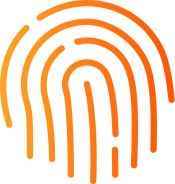
completed papers
client testimonials
writers online
support operators
MEISTER is a German word for a master or highly skilled and knowledgeable specialist.
That’s exactly what we are! We’ve been doing custom essays, academic writing, ghostwriting, professional writing and freelance writing since December 2006.
Since then, thousands of high quality term papers have been delivered to people from all corners of the Earth, from all walks of life.
We are «The Company» to trust when you need a turnkey, hands-off custom writing solution!
With us, you get great fully managed essay writers that are backed by a full time team of project managers who are on standby 24/7 to make sure your project is done the right way!


Ranging from essays to dissertations, our services are quick, discrete and professional and it takes only 5 minutes to place an order! After that, it is all handled for you! Once we have your project specifications, we do all the legwork associated with getting your project done by the best writer possible in the shortest amount of time.
If you are the sort of client that wants to buy an essay and still be involved in the process 100%, we provide all the tools required. You will have a messaging application to communicate with the writer, SMS and E-mail notifications to stay informed, a facility to upload and fax any required materials or sources and a 24/7 support team with a toll-free hotline and a chat application for any support required.

You come to our site and fill out the order form with all the details of your project. You can attach any additional files. Then, you enter your credit card or Paypal account credentials and your order is in.

Your order is analyzed by our project managers. They evaluate the requirements of your assignment and try to match it with the best writer who is competent to complete the job.

Your personal writer starts writing the piece from scratch. It is hand-typed in a text processor. Once finished, the draft is uploaded in to our system for processing by our Quality Assurance team.

The paper has been finished. Now you can download the file from your account on our site (you will also receive a backup copy in your e-mail). You can request a free revision, if your original instructions are not met.
We have a modern website with great and efficient design and fantastic features.
Our service is feature-packed and all is included in the advertised price!
We have a 24/7 dedicated support team.
We pay very high wages to our writers, hence we can employ the best.
We have a clear and simple refund policy that just works.
We have a great experienced team behind our product.

Our writers follow
your instructions.

The paper will be one-of-a-
kind, never resold!

Your essay will be
delivered on time.

No third-party will ever find out you’ve used our service



Our support team is here 24/7 via live chat, phone and on-line support ticketing system.

©2023 All Rights Reserved. SpeedyEssayelp.com